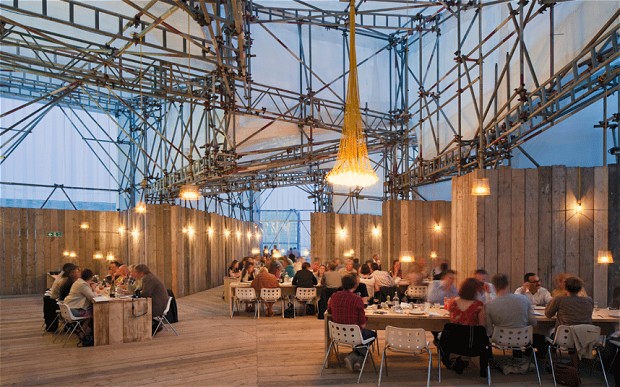Across Europe, the average lifespan of a pop-up restaurant is just 47 days – but some generate five-figure revenues in that time. As traditional leases become riskier and urban space scarcer, hospitality brands are redefining what it means to “open a location.” Why invest in permanent bricks and mortar when flexibility is the new premium? From supper clubs in shipping containers to gourmet tents in fields, the food industry is becoming more agile – and it’s changing everything, from logistics to guest experience.
Short-Term Vision, Long-Term Strategy
The idea of setting up a fully functional dining venue in under a week would have sounded ludicrous just a decade ago. Today, it’s becoming the norm. Whether it’s a rooftop tasting menu, a seasonal riverside café, or a touring culinary experience, more operators are rethinking their relationship with physical space. Owning a permanent address is no longer the only route to success.
Instead, savvy restaurateurs and event organisers are investing in modular temporary structures – flexible, reusable frameworks that can be built, dismantled and moved from one location to the next with minimal disruption. From a business standpoint, they offer clear advantages: lower upfront costs, freedom from long-term rental contracts and the agility to follow demand rather than hope it arrives.
Agility as Competitive Edge
Pop-up formats also allow brands to test new concepts with minimal risk. Want to trial a vegan brunch concept in Brighton before rolling it out nationwide? A mobile unit lets you gauge interest, gather feedback and refine your offer in real time. Unlike permanent venues, these structures carry fewer sunk costs and can be rebranded or relocated within days. For younger audiences especially, who crave novelty and hyper-local experiences, that adaptability is part of the appeal.
Designing Experiences, Not Just Spaces
One of the key shifts in modern hospitality is the movement from selling food to curating an experience. Guests expect more than a plate of pasta – they want storytelling, immersion, and Instagrammable moments. Pop-up formats are inherently experiential. They’re temporary, often themed, and they bring with them a sense of exclusivity. Miss it now, and it’s gone.
This emotional urgency creates natural marketing momentum. A rotating sushi bar in a decommissioned train carriage? A night market with fire pits and seasonal cocktails under fairy lights? These moments don’t just fill seats – they fill feeds. That digital echo can often be more valuable than the physical footprint.
Reusability Meets Sustainability
Environmental concerns are also shaping the future of pop-up hospitality. Reusable structures, reduced construction waste, and smaller energy footprints make mobile venues more appealing to eco-conscious consumers. Unlike permanent restaurants, which are often costly to renovate or abandon, pop-ups can be disassembled and rebuilt with minimal impact. This isn’t just good practice – it’s becoming part of the brand story.
Infrastructure That Moves With You
The logistics behind these ventures are evolving rapidly. Event hosts now have access to lightweight yet durable materials that can withstand weather, offer insulation, and adapt to various terrains. Gone are the days of basic white marquees; today’s modular systems are sleek, design-driven and fully customisable.
Companies such as Spantech are leading this transformation, offering scalable infrastructure that meets the specific demands of hospitality environments. Whether for a one-off launch or a recurring roadshow, these structures enable brands to create event venues with modular temporary structures that are as practical as they are eye-catching. Their ability to be reused – over and over again – turns them into assets rather than one-time investments.
From Local Buzz to Global Tour
Roadshow-style dining, where a brand travels from city to city, is growing fast. It combines the benefits of physical presence with the cost control and brand consistency of a digital product. By using repeatable formats and mobile infrastructure, restaurants can scale faster, build hype and create truly global campaigns – all while staying agile.



